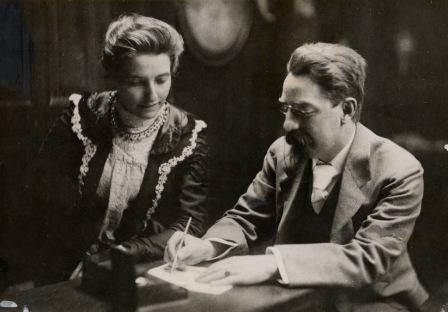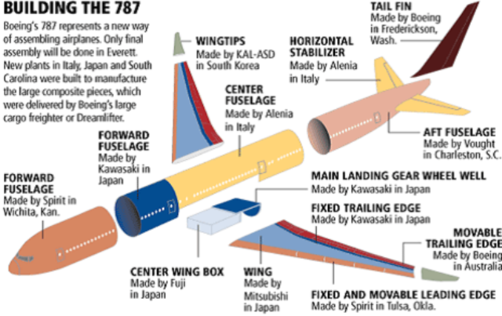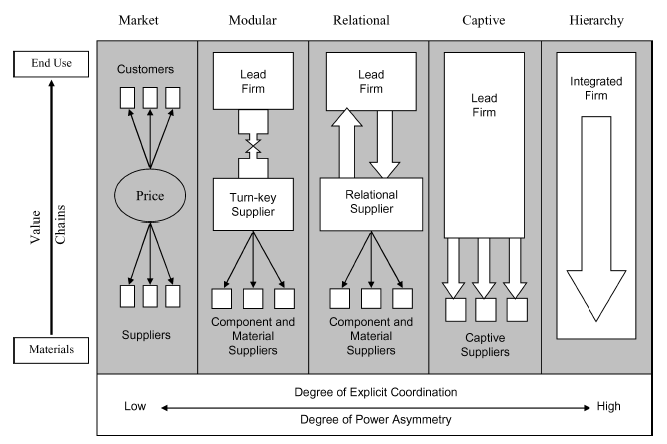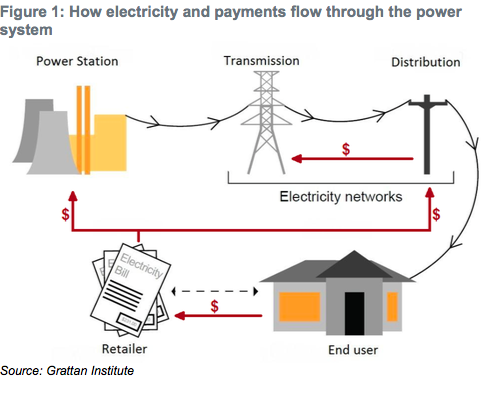
Read
Read
Author: The Hon Daniel Mookhey MLC is a member of the NSW Legislative Council
Fellow Fabians -
We Social Democrats owe an un-payable debt to Beatrice and Sidney Webb:

The two founders of the The New Statesmen, the two creators of the London School of Economics, the two drafters of the British Labour Party’s first Clause Four, and the two inventors of the term ‘collective bargaining’, were two passionate believers in twinning human reason and human agency. The ethos, which became Fabianism — described by Gough Whitlam as ‘the stubborn faith in human ability to solve the problems of human life through the application of human reason.’
Tonight, in homage to the Webbs, I will speak about how Labor’s quest to use human ability to solve the problems of human life through the application of human reason requires Labor to re-examine the role of State Governments.
Specifically, to transform them into Progressive Australia’s engines of innovation. The design strata of Government. The strata of Government which creates news ideas, hones political language to express them and which engages with constituencies needed to deliver them. The place for the Movement to think, test, adjust and respond. A Progressive hedge against Federal paralysis .
The ideas to which I am referring ares ideas that both State and Federal Labor have developed about new forms of partnership possible between the markets and the state. They are about how these new partnerships can be struck in service of Labor’s timeless mission: to deliver a good life for every Australian.
Labor’s ideas have been developed because the global interplay of economics, culture, security and the environment have collectively changed how people live and work faster than the institutional and market settings that, notionally, are meant to determine them.
Modern Labor accepts the scope, scale and speed of these changes is irreversible. Protestations from the far-right about halting the free movement of people; asseverations from the far-left to stop the free-exchange of goods: neither is feasible, because neither is the route to the future for any nation living under globalised conditions. Thus Labor is trying to resolving the tension David Miliband recently spotted between ‘the engine of growth and opportunity that is globalisation, and (…) inequality.’
Markets & The State
Let me explain the first idea: the new forms of partnership between the market and the state. How State Governments can implement them.
It is true that it is not just Labor, or the Centre-Left, that strives to re-negotiate this partnership between market & state. The Tories, and the Centre-Right are equally engaged.
This is because Tories are responding to the same factors we are: the disruption globalisation has caused to production. The capacity for so many goods and services to be produced anywhere and consumed anywhere. With all the attendant impacts this flexibility has on local jobs, local employment and local taxes.
The Tory reaction is to remove any shackle that might prompt the BHPs, the Rio-Tintos and the Macquarie Banks to take to shores less demanding. Hence the passel of Tory campaigns that strive to turn Australia and New South Wales into low-wage, low taxing jurisdictions. Presented with a quaint new idiom that disguises the real social choice being presented.

Consider the term ‘a double Irish with a dutch sandwich.’ To most, this sounds like a lunch order: two Guinness, wheat bread and pickles. In fact, it it refers to an almost stock-standard corporate tax minimisation strategy; a strategy which conflicts with the hitherto strong national consensus that business should be free to make magnificent profits if it shares a sliver of those profits with everyone else through high wages and the tax-system.
If you accept that a price-led response to global competition is the right response for Australia, you overlook terms like ‘a double Irish with a dutch sandwich’. And you certainly overlook the inevitable outcome of the strategy it reflects: a global race-to-the-bottom. A race that results with the highest price being paid by people who already possess the least.
But if you are a realist, you accept that Australia can’t win a race on those terms; and rather than positioning the Country for competition with nations in the infant stages of economic development — the better strategy is to move the nation up the global value chain. Securing Australia’s long-term future by morphing the Country into a knowledge leader, not just a price-beater.

This is the Progressive answer to the globalisation challenge. A strategy which recognises that the only way to secure permanent economic activity and investments in a City or regions is to turn our cities and regions into value-adding hubs. Places so endowed with high levels of expertise, so defined by the exchange of information about an industry’s knowledge core, that the city or region itself is the comparative advantage: the easiest place for businesses to participate in ecologies that produce innovations, develop product variations, plan advancement and add value.

Place-centric strategy is about the power of attraction. And the reason Progressives favour this strategy is because the network effects embedded into a place cannot be off-shored. And they are almost impossible to replicate elsewhere. Try moving transport from Chicago. Or insurance from London. Or fashion from Milan. Or high-tech from Tel-Aviv. Or Shipping from Singapore. Or banking from Sydney. (Although I’m sure some would try that one). You’d fail. Because you’d collide with the unseen knowledge networks that each City has honed from these industries through time. Networks that are so intwined into the fabric of these Cities, that the benefits of businesses remaining connected to them easily outweighs the City’s price of labour, or scale of taxes. After all, Milan creates more value for a fashion designer’s business than a city that only offer a fashion week.
The point abut these examples is: creating cities and regions that are value-adding hubs, cities and regions that can lead global-value chains is an example of the new forms of the partnership progressives seek between market and state. And its a partnership that only State Governments can lead.
The first frontier for gubernatorial action is obvious: human capital. And I need not point out that innovations that improve the long term quality of human capital — early investment in childhood development; the drive to higher teacher standards; modern curriculums; and quality vocational education — all are bedrock innovations that must be driven at the State level. And these innovations matter more than, say, the Premier’s tweets during the Bachelor.
Market Design
Without needing to explain this point, I do want to explain one prerogative rarely remarked upon, inextricably intertwined with the economic prospects of city and region, that is also almost always the exclusive possession of State Governments: the power to design markets.
Market design means more than spotting a market failure and then trying to regulate it out of existence. Market design means setting the rules that determine how economic actors interact with each other; and setting those rules so the natural result is socially progressive outcomes. This is a powerful prerogative. More so in time of great technological change. When the chance to sit atop a global value chain flows to the Cities and Regions that have the right market design.

Designs which decide whether new technologies will be allowed to supplant old; whether disruptive business models can challenge incumbent equivalents; and whether powerful establishments will face competition from scrappy insurgents. Thriving cities and regions understand that the test of a market structure is not ‘which business is profiting’, it is whether the public interest — the citizenry — gain from having more options, and people who work win by having better paid jobs with more rights.
Right now a worldwide tussle is underway between the world’s cities to determine the headquarters of the global value chains being created in this incredible age of technological progress. Machine learning, robotics, quantum computing, seed technology and genome mapping — the global value chains these technological leaps are forging are still looking for nations willing to be members. Bill Shorten has a plan. But New South Wales can lead securing for Australia membership in the once-each-century revolution sweeping two key industries: the revolutions in energy and point-to-point transport. It simply needs the right market design
Market Design In Practice
The revolutions in the energy and transport industries have different origins. In energy: the incredible fall in the cost of solar panels, and the incredible rise in the quality of battery technology, means power can now be produced efficiently and stored effectively exactly where it will be consumed. In point-to-point transport, the rise of cloud computing means companies like Uber, Lyft and Google can use the cloud to run sophisticated algorithms that match people headed in a particular direction, with people willing to transport them.
Both of these technological revolutions have had this effect: they’ve surged new capacity into the market, with relatively minimal investment needed. For economists, this is an occasion for celebration. For incumbents, it’s a signal of impending competition. But for state governments it should be a cue for leadership. Because it is state government which decides first whether this new capacity trades in the market. And it is state government that decides the circumstances in which it trades.

NSW Labor knows it. Luke Foley acted. He committed to new market designs for both industries. In energy, he committed Labor to keeping the grid in public hands. And he said if the grid can’t be kept in public hands, it should, by law, remain neutral. Neutral towards which forms of energy — be it Coal, Solar or Wind — that can connect and compete on the the grid. And neutral in deciding what price the grid pays for the power each generator creates; especially the price the grid pays for surplus power.
In point-to-point transport he made a commitment of equal value. The call in his budget-reply address for a point-to-point market based on co-existence between ride-sharing and the traditional taxi industry. Pledging to make NSW the 25th jurisdiction in the world to accept that ride-sharing can’t be wished away by RMS cancelling the licenses of forty drivers; so it should be used to serve the public good.
Neither of these commitments has been matched by the Baird Government. In time, they will. But in the meantime, we Progressives should be thinking about how to impel these revolutions forwards. About the suite of policies needed that elevate New South Wales to the top of the new global value chains in both the energy market, and in point-to-point transport.
In energy — one policy that would have an impressive impact would be for the New South Wales Government to switch all its power to renewable energy by 2030. Every hospital. Every school. Every TAFE. Every train. Powered by clean energy. Making the New South Wales Government one of the world’s biggest buyers of renewable energy. Making a massive contribution to meeting Bill Shorten’s target of having half of Australia’s power generated from renewable sources. A practical example of how a creative periphery creates the conditions for a creative centre.
In point-to-point transport — an equally impactful commitment would be to make New South Wales the first jurisdiction in the world to incorporate the taxi-industry and ride-sharing into the public transport system. Assigning to the taxi-industry and ride-sharers responsibility for last-mile transport: the journey between a bus-stop, or railway station, to a person’s home. An adaption that will provide people with a practical alternative to their car. An innovation that can only be undertaken if you welcome technology that connects people going in the same direction at the same time, with the people willing to transport them. If you have a Government willing to sync that technology with road and rail.
Both these ideas have this in common: they are leverage plays. They give the NSW Government sufficient clout to move the state to the top of the global value chains. So if the NSW Government becomes the world’s biggest buyer of solar panels, if it becomes the biggest buyer of battery technology, it will have enough clout to meaningfully partner with Trina Solar and Tesla in the manufacture of both. High tech manufacturing; exportable product; growth industry; long term jobs: achieved with the canny use of the State Government’s purchasing power.
The same opportunity is available in point-to-point transport. If New South Wales is the first jurisdiction in the world to plan for last-mile transportation, it will be the first jurisdiction in the world to develop the network of designers, modellers, planners and firms that will collectively comprise a new knowledge core about urban transport. This — in an urban age. When, by 2050, three out four human beings will live in cities. When the demand for people who can plan smart cities outstrips those who can build them. Another chance for New South Wales to go to the head of the class.
Fabians -
Market design, be it for energy or transport, are a tool used by Governments who aren’t retreating from the future, but are instead, shaping it. But those who succeed know for whom that future should be shaped. Ultimately, its Citizens. And Citizens, judge the success of any market according to whether it delivers them more power; either as a consumer or as producer. Which is why future market designs are entwined with the future of work. And the future of work has always been Labor’s first mission. A responsibility of both State and Federal Labor Governments.
State Governments and the Future of Work
This century, this mission needs to be fulfilled under globalised conditions.
A person who started their career aged 25 in 1984, the year Labor opened Australia to the world, is fifteen years away from retirement. They will have worked their entire career under the economic model Labor created. They’d have benefited from all the upsides: 24 years of uninterrupted economic growth; decades-long levels of low unemployment; decades-long levels of low inflation; and for women, the right to meaningfully exercise power.
But they are equally likely to have experienced the downsides: Australia’s de-industrialisation; a record low wage share of the economy; record high levels of inequality; the marginalisation of the employment contract, and the rise of precarious employment.

In truth, the Labour market has changed faster than the speed of the Labor Movement’s response. In part, this is the result of Tory truculence about workplace relations. It has meant that we’ve spent more time fighting to save people’s 20th Century rights at work than we’ve had thinking about their 21st Century equivalents. In part, it is also because responsibility for governing the world of work has drifted to Canberra. And in Canberra, workplace relations is subject to all of Canberra’s vicissitudes. Namely: inertia. Some politicking.
Here lies a major opportunity for State Governments: to fill the vacuum. To build the array of institutions fit for purpose in a 21st Century service economy, rather than a 20th Century manufacturing one. These are institutions that make sure that in times of economic good fortune, work results in high rewards for workers — a middle class life — while in times of scarcity, protection is offered to those in work, and those wanting work.
In a manufacturing-centric economy, meeting these two objectives meant centring workplace relations on the relationship between workers and their firm, emphasising the employment contract’s role in sharing wealth and risk. In a service economy, this relationship still matters, but workers also need institutions that govern their relationship with the market at large. Institutions, which regardless of a worker’s legal classification — full time permanent, casual, independent contractor or permanent part-time — fairly share wealth and distribute risk.
Portable entitlement schemes; lifelong learning accounts; time-of-payment laws; pooled insurance schemes; free-lance shared workplaces; contractor courts — these are the mixture of rights and institutions that have resonance with people who work in a service economy. They are also a political bridge for Labor to connect with independent contractors, freelancers, and workers in the ‘gig economy.’ And they are a route out of precarious employment for those who no longer want it.
The Reforming Temperament
All of these workplace reforms can be delivered by State Governments. Collectively they comprise more than a safety-net for people at work; they are a springboard to a middle class life. And if pursued concurrently with market designs that morph our cities and regions into wealth producing hubs sitting atop global industry, they present a pathway for the Centre-Left to seize the opportunities presented by globalisation without compromising on equality.
So what then should State Labor do? What adjustments are needed to ensure that State Labor wins on a platform of change? Let me conclude: with four observations about how our Movement can use its time in Opposition to hone the reforming temperament needed for our next spell of Government.
My first observation is for the Movement to stop thinking about State Governments as an after-thought in our theory of change. The level of Government always secondary to Canberra in the magnitude of change that is possible. Start thinking about them as reform powerhouses. The strata of Government which can make change in Canberra easier.
My second observation is for the Movement to be ambitious about its gubernatorial reforms.
State Governments will always have a ‘bread and butter focus’ on roads, schools and hospitals. Labor will always be vigilant about delivering these basics. But place matters; now more than ever. And only State Governments can fundamentally shape the dimensions of a place like a city or region. So we should be ambitious about the shape of New South Wales we expect the next State Labor Governments to mould.
This brings me to my third observation: the corollary of ambition is elevation. The willingness of all parts of our Movement (industrial and political) to swap conversations like ‘what is the right level of union representation at party conferences’, or ‘whether Labor Governments are perennially condemned to be bad employers of public servants’ with conversations like ‘how can all of our Movement’s power be engaged to deliver a good life for every Australian?’ Because that is our Movement’s mission. The bigger picture.
Thus my final observation. The lesson taught over one hundred years ago by Beatrice and Sidney Webb. It is: that our Movement rarely, if ever, has an interest in preserving the status quo. Even if it is good, it can be better. And if it is bad, it has to change. Gradually: perhaps. With reason: always. But the job is to reach the right policy. To apply our principles to changing times. And to use our time in Opposition wisely. Heeding the very first Fabian Society pamphlet:
“You must wait, as Fabius did most patiently, when warring against Hannibal…but when the time comes you must strike hard, as Fabius did, or your waiting will be in vain, and fruitless.”
Thank youu.
We use cookies on our websites. You are free to manage this via your browser setting at any time.
Share your thoughts
Sign in with
FacebookTwitter